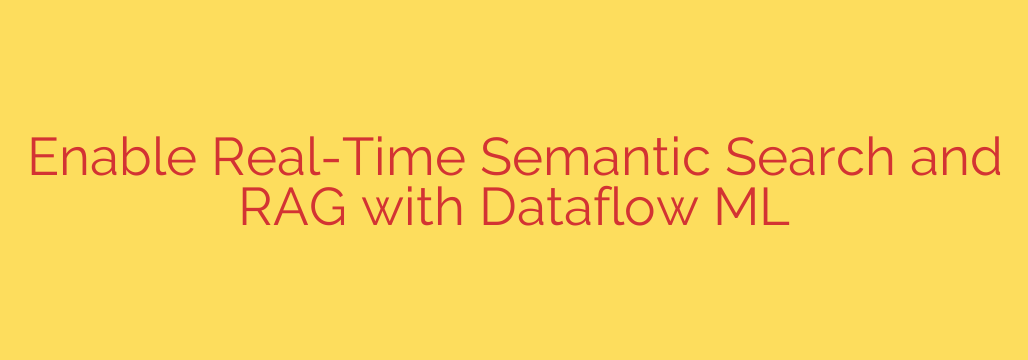
Unlock the Power of Real-Time Semantic Search and RAG: A Deep Dive
In today’s data-rich environment, the ability to quickly and accurately retrieve relevant information is paramount. We’re moving beyond keyword-based searches to a world where understanding the meaning behind the query unlocks true potential. This is where semantic search comes into play, and when coupled with Retrieval Augmented Generation (RAG), it becomes a game-changer.
Semantic search focuses on understanding the intent behind a user’s query, not just matching keywords. Imagine searching for “best laptops for photo editing.” A traditional keyword search might return results containing only “laptops,” “photo,” or “editing.” Semantic search, however, understands the complete context and can identify laptops specifically designed for the demands of photo editing, even if those pages don’t explicitly use all three keywords together.
Why is this important? Because users get exactly what they’re looking for, faster. This leads to increased engagement, improved user satisfaction, and ultimately, better business outcomes.
But the real magic happens when semantic search is combined with RAG. RAG takes the retrieved, semantically relevant information and uses it to augment the responses generated by large language models (LLMs). This means you’re not just getting search results; you’re getting insightful, contextually relevant answers directly generated from your data.
Think of it this way: You ask a question, semantic search finds the most relevant passages in your knowledge base, and then RAG uses those passages to craft a tailored, informative answer. This is incredibly powerful for applications like:
- Customer Support: Providing instant answers to complex questions, pulling information from vast documentation.
- Knowledge Management: Enabling employees to quickly find the information they need to make informed decisions.
- Content Creation: Assisting writers in generating high-quality content by providing relevant background information.
How can you implement this? Building a robust semantic search and RAG pipeline requires careful consideration of several key components:
- Data Ingestion: Getting your data into a usable format is the first step. This might involve cleaning, transforming, and indexing your data.
- Embedding Generation: This is where the “semantic” part comes in. Embeddings are numerical representations of your data that capture its meaning. Choose the right embedding model for your data type and use case.
- Vector Database: Store your embeddings in a vector database for efficient similarity searches.
- Search Indexing: Build a search index on top of your vector database to allow for rapid retrieval of relevant information based on the embeddings of user queries.
- LLM Integration: Choose a suitable LLM for generating responses based on the retrieved information. Optimize the LLM prompts to ensure accurate and informative outputs.
Security Considerations: When implementing semantic search and RAG, remember to prioritize data security.
- Access Control: Implement robust access control mechanisms to ensure that only authorized users can access sensitive data.
- Data Encryption: Encrypt your data at rest and in transit to protect it from unauthorized access.
- Prompt Injection: Be aware of prompt injection attacks, where malicious users try to manipulate the LLM by crafting carefully designed prompts. Implement safeguards to mitigate this risk.
By embracing semantic search and RAG, you can unlock the true potential of your data and provide users with a more intelligent and engaging experience. It’s an investment that can pay dividends in improved efficiency, enhanced customer satisfaction, and a competitive edge.
Source: https://cloud.google.com/blog/topics/developers-practitioners/create-and-retrieve-embeddings-with-a-few-lines-of-dataflow-ml-code/








